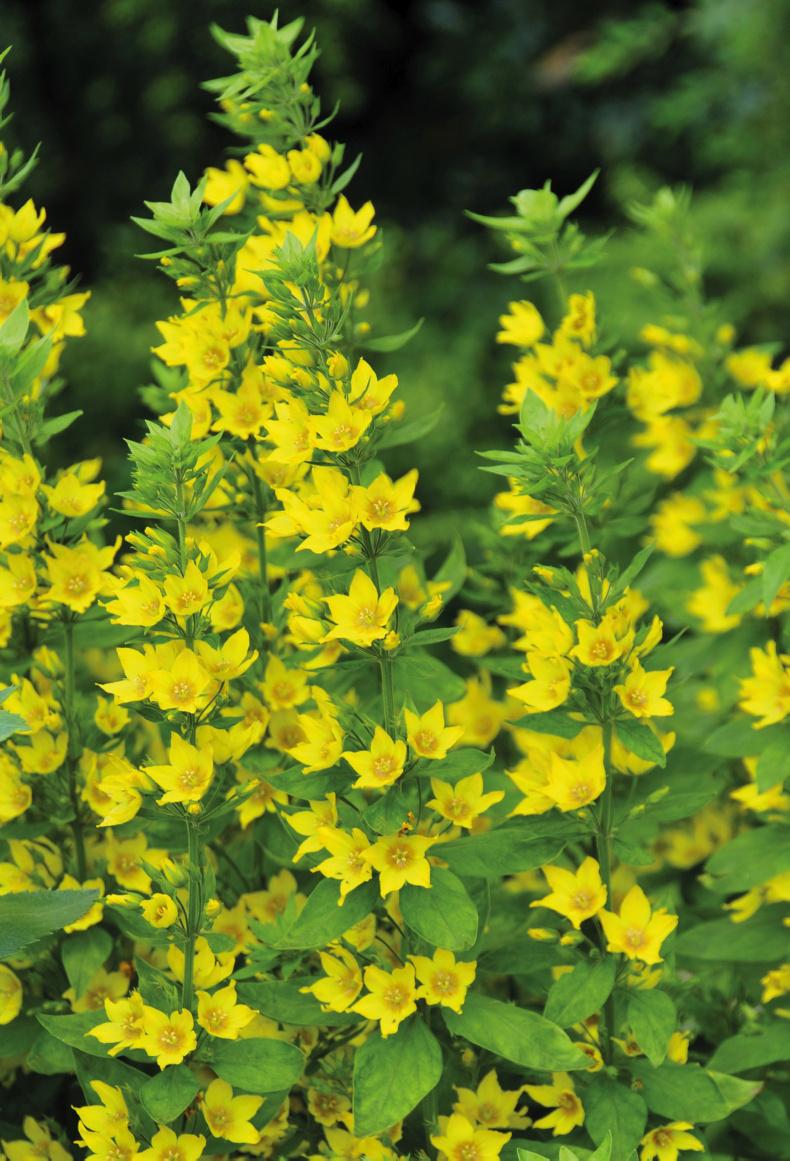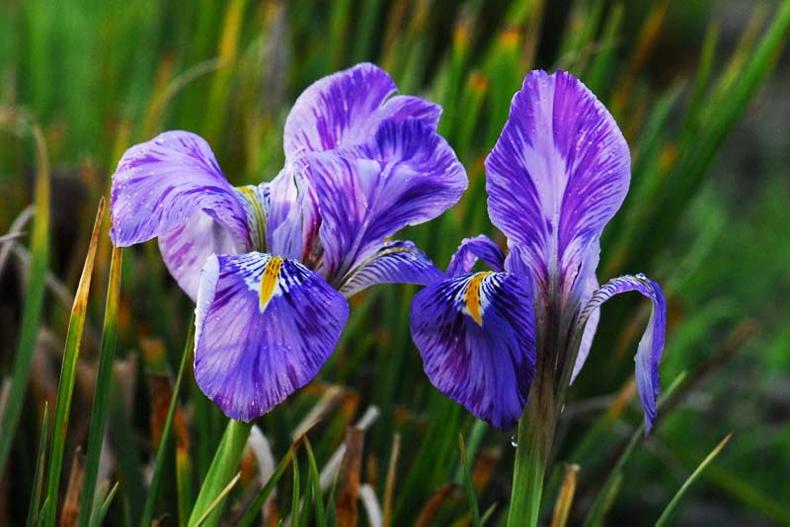A native wild flower, yellow loosestrife gets the name because it resembles purple loosestrife – having upright narrow stems – though with yellow flowers rather than purple. Otherwise they are not even closely related, the yellow sort, not widely seen, being part of the primrose family, while the purple has its own family. Not that it hugely matters if they are related or not, but it is useful to know because members of plant families share familial traits.
The wild yellow loosestrife is called Lysimachia vulgaris, the second part of the name meaning common, of the crowd. In summer, it produces tall, slender stems to about 1.2 metres, with leaves along the stems and flowers in little clusters at each leaf. The flowers are cupped, with pointed petals of a nice bright but not harsh yellow, about 1.5cm across. It spreads by stems at soil level and can be invasive for garden use, but might suit a country garden.
A very similar species, the spotted or dotted loosestrife is the Lysimachia punctata, the second part of the name referring to black spots on the leaves. This is not native, coming from Central Europe, but it is probably better known than the wild sort. It has escaped from gardens in some places and grows happily by roadsides and ditches along with native plants.
Like the wild species, both of these plants have spreading tendencies and should only be used where they can fill an odd corner, but cannot go much further. For garden use, though with strict control, there is a named variety called Alexander, which has white and pink variegated leaves and remarkable cream and red-pink markings on the new shoots as they push out of the ground in spring.
Much more restrained is Lysimachia clethroides, which has short spires of white flowers from about mid-summer. The second name means like clethra, a shrub that carries similar spikes of white flowers. As the flowers of this lysimachia mature, the flower spike develops an arching shape that is attractive, as the spikes arch over in the same direction, usually away from the prevailing wind or from a bigger plant. This one’s leaves turn to shades of orange and red, and the stems are red after the leaves fall, whereas the others give a bit of yellow, but not as good.
Another perennial in this genus is Lysimachia ciliata, which means with hairs, with little hairs on the leaves. This kind is really only seen in its dark-leaved form called Firecracker, which was very popular a few years ago for the chocolate-brown colour that makes a fine contrast with all the shades of green that arise in a flower border in late spring and early summer. It has small, yellow flowers, but these seem a bit out of place with the brown foliage and some people cut the stems to get a second show of leaves.
While all of these forms of loosestrife are upright, there is a pretty species that is the exact opposite. Lysimachia nummularia is known as creeping jenny because it creeps over the ground, rooting as it goes. It has the same yellow flowers, but a completely different structure. The stems are just wire-thickness and flop down onto the soil. Although the original species is green, this plant is mainly seen in its golden-leaved form Aurea, and it is evergreen. It can spread to make a nuisance of itself, but can look well on a slope with bigger plants around it to hem it in, and it is easy to chop back. All of these plants like moist soil in full sunshine and wilt quickly in dry weather. CL
Crop of lupins
Lupins look spectacular, with their tall towers of brightly-coloured pea-type flowers. The flowers open first at the bottom and by degrees all the way to the top, the spent flowers falling or forming seed pods. However, once they pass halfway up the stems, certainly two-thirds of the way, they begin to look shabby and lose much of their charm. When this point is reached, the spent stems can be cut off just above the top leaf and the plant is likely to produce some late-summer flowers. These are never as big as the first show, but very welcome just the same. The trim-back also gets rid of unsightly heads of flower pods, unless you wish to leave a couple of them to make seeds for sowing, although these can be a mixed bag. And if left to shed, new plants will pop up all over the place.
>> This week
Trees, shrubs and flowers
Check young trees and shrubs for water shortage – many were under pressure in recent weeks. Continue to spray roses against blackspot and leaf spot after any long rainy spells. Control weeds around young trees in new woodland areas, hedges or shelter rows, but avoid the plants.
Fruit, vegetables and herbs
If not already done, now is the time to plant out sweetcorn, runner beans and courgettes, ideally into moist soil on an overcast day or evening. Make repeat sowings of vegetables, such as lettuce and peas. Thin out vegetables that have reached suitable size and control weeds early.
Flowers
If not already completed, plant up pots and containers and plant out summer bedding plants in beds and borders. Hoe among the plants to control the first flush of weed seedlings and follow up hoeing until the plants fill up. Plants that fall over in summer need support in an exposed garden.
Lawns
If the soil is adequately moist, put out some lawn fertiliser or high-nitrogen fertiliser for a good-quality lawn, but if growth is adequate there is no need to feed. Lawn weedkiller can be applied if there is good growth in fine weather, but not if you want to have a wild flower lawn.
Greenhouse and house plants
Ventilate well during hot or damp weather. Use shading if the greenhouse gets too hot. Watch for pest build up on greenhouse plants, especially red spider mites, greenflies and scale insects. Continue feeding strongly and watering generously to keep growth moving well.










SHARING OPTIONS